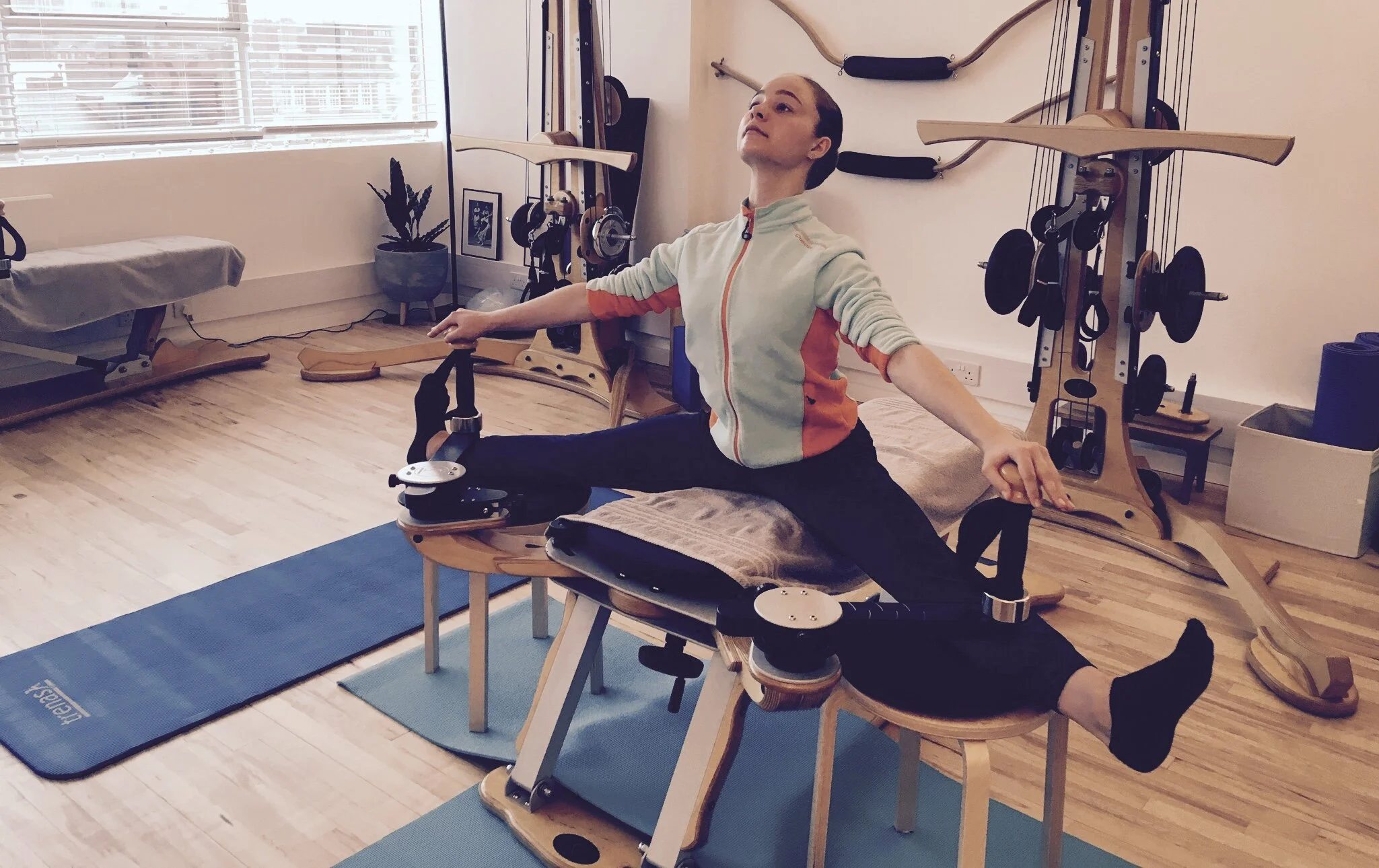Dance is quite unique in the requirements it makes on the body – at once athletic like a decathlete, but flexible like a gymnast , not to mention being an actor at the same time (oh and unlike most athletes you have to be on top form all year round with performances throughout the year and often 8 shows a week for weeks in a row).
A professional dance career generally starts around 19yrs old and most people have already completed a good 10 years or more of training, and developing technique and strength. So, vocational dance training typically starts very young, at least 8yrs old but usually younger. This also means that habits are created at an age when they don’t yet have much awareness of what they are doing physically, let alone what is going on internally. During this training process dancers sometimes find ways to achieve movements that may look good, but are not suitable for their particular body, or their technique may lead to muscle imbalances, and it is often not until later in their career that these habits start to cause injuries.
Injury
Injuries are a fact of life for dancers just as they are for athletes. However injury is often the starting point for a dancer to discover more about their body, their technique and habits that may have played a part in causing the injury, sometimes they need to change the way they work or undo bad habits. This requires an understanding of what is happening physiologically when they move and dance, where they are taking the strain, or where they have an imbalance of strength. Injury can in fact be the starting point to becoming a stronger, more aware, more nuanced dancer.
Gyrotonic For Dancers
The Gyrotonic Expansion System is ideal for dancers in the way it develops awareness and connection throughout the whole body in a totally 3-dimensional way. Some people are under the misapprehension that Gyrotonic method is all about flexibility but in fact there are so many levels on which Gyrotonic method works, from the muscular system, to the nervous system, the fascial system and the mind. As a therapeutic, somatic practice that creates internal awareness and breathing practices it can be ideal for initial rehab, but it also offers extremely challenging, strength building, three dimensional exercises for balance, jumping, turning and core strength.
The Gyrotonic equipment enables eccentric loading in a wide range of motion, which creates strength in the extended, and sometimes extreme, positions required of dancers.
Sometimes traditional strength building exercises can cause contracted or closed kind of stability, which restricts range of motion. In Gyrotonic the focus is on achieving dynamic elongation of the muscles without losing the strong connections through the body that create stability; again this is exactly what dancers need.
Muscle balance
Many strong dancers have the ability to ‘muscle though’. We have all done it at some point, whether due to tiredness, under preparation, repetition, or muscle imbalance, we overuse certain muscles to achieve the desired movement. But over time this can lead to injury - a bit like driving your car with the handbrake on – you might get from A to B but it is bad news long term!
The Gyrotonic method can help to develop the full body connection and awareness to distribute the force more evenly. Using resistance, support, breath and gravity to ensure individual joints and muscles aren’t overloaded this system can help develop healthier more sustainable habits. The equipment can help to challenge the balance, the proprioception so that the dancer is able to find alternative ways of moving and a different perception of their physical system.
Common issues
These are just some of the issues I see in dancers that regular Gyrotonic practice can help with:
· Overuse of quads & hip flexors
· Less strength in upper body than lower body (more common in women)
· Too much passive stretching, weakening muscles such as hamstrings
· Spine issues – from uncontrolled hypermobility or forcing of arabesque
· Hip injuries – from overuse or forcing of turnout
I urge any dancer to find a Gyrotonic trainer and explore how it can transform your approach to cross training.
Copyright: Dorcas Walters 2021

